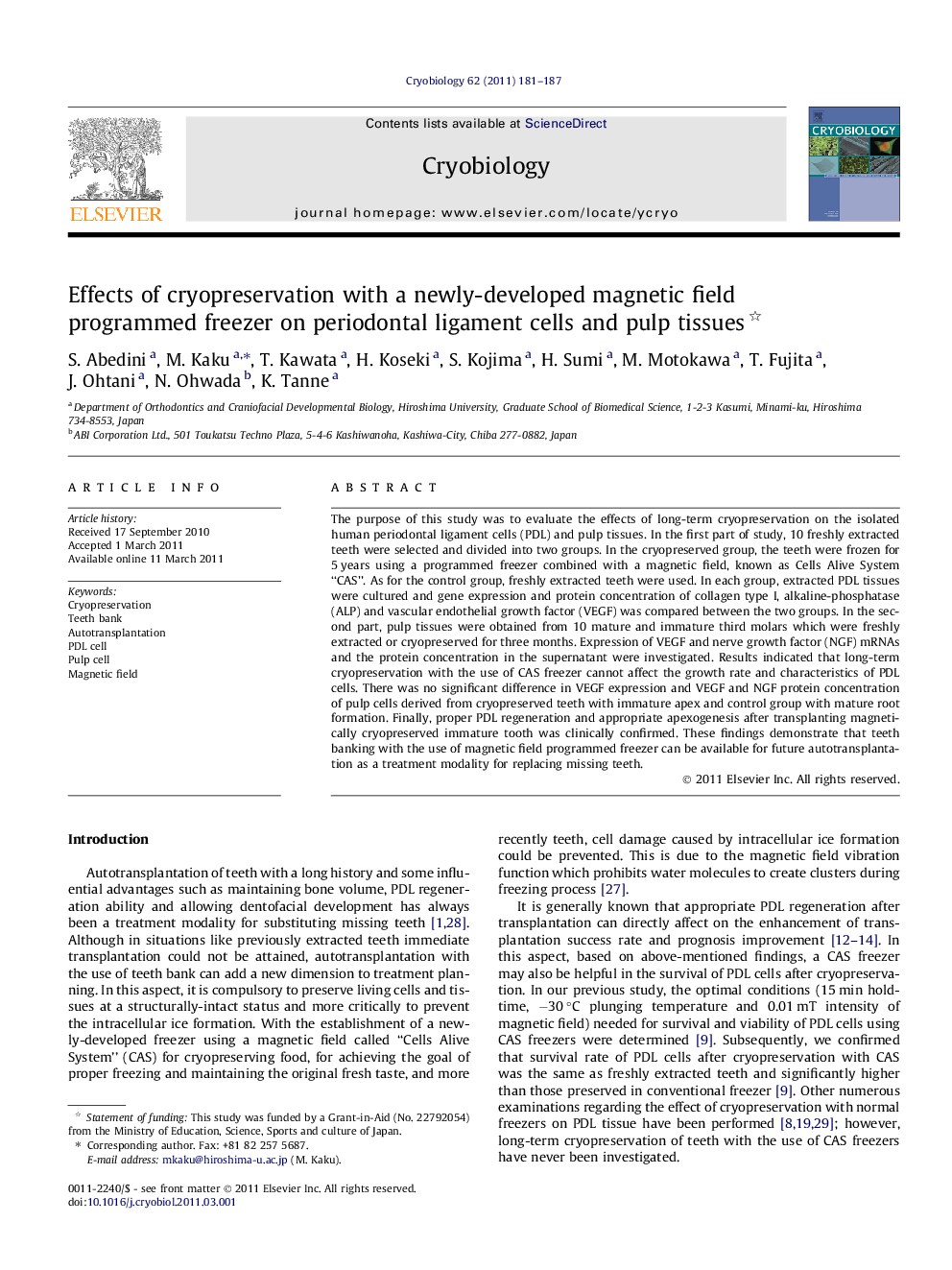| Article ID | Journal | Published Year | Pages | File Type |
|---|---|---|---|---|
| 2168449 | Cryobiology | 2011 | 7 Pages |
The purpose of this study was to evaluate the effects of long-term cryopreservation on the isolated human periodontal ligament cells (PDL) and pulp tissues. In the first part of study, 10 freshly extracted teeth were selected and divided into two groups. In the cryopreserved group, the teeth were frozen for 5 years using a programmed freezer combined with a magnetic field, known as Cells Alive System “CAS”. As for the control group, freshly extracted teeth were used. In each group, extracted PDL tissues were cultured and gene expression and protein concentration of collagen type I, alkaline-phosphatase (ALP) and vascular endothelial growth factor (VEGF) was compared between the two groups. In the second part, pulp tissues were obtained from 10 mature and immature third molars which were freshly extracted or cryopreserved for three months. Expression of VEGF and nerve growth factor (NGF) mRNAs and the protein concentration in the supernatant were investigated. Results indicated that long-term cryopreservation with the use of CAS freezer cannot affect the growth rate and characteristics of PDL cells. There was no significant difference in VEGF expression and VEGF and NGF protein concentration of pulp cells derived from cryopreserved teeth with immature apex and control group with mature root formation. Finally, proper PDL regeneration and appropriate apexogenesis after transplanting magnetically cryopreserved immature tooth was clinically confirmed. These findings demonstrate that teeth banking with the use of magnetic field programmed freezer can be available for future autotransplantation as a treatment modality for replacing missing teeth.
